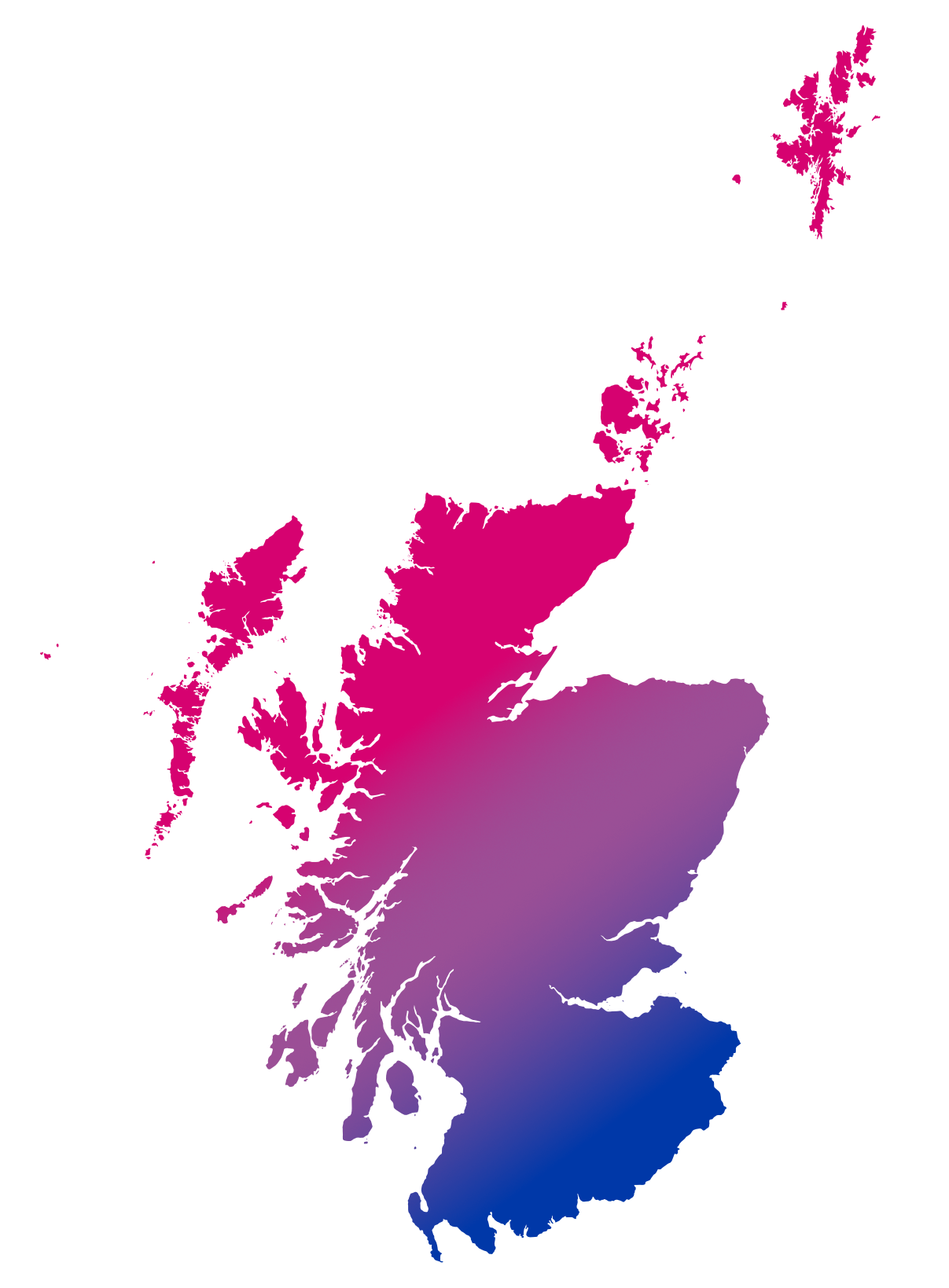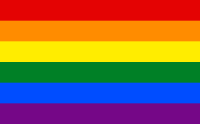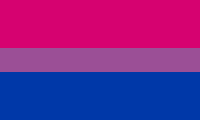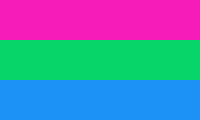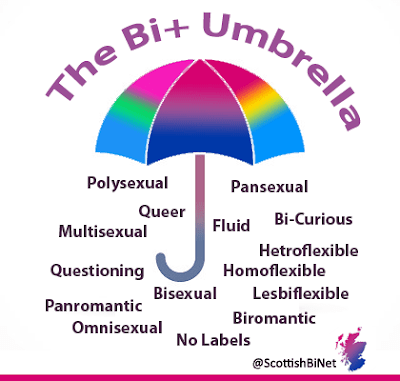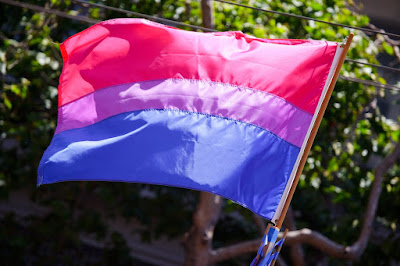 |
| Flying the Bi Flag |
The rainbow or pride flag has become synonymous with the LGBTI+ community (and by some incorrectly associated with just the gay community).
Over time many more flags have been created and adopted to represent groups of people within the LTBTI+ umbrella.
Even within the Bi+ community there are various flags to represent people associated with the various labels under the bi+ umbrellaand intersecting groups or communities.
Below we give examples of just some of the flags members of the Bi+ and wider communities use. Not everyone that uses a label will necessarily recognise or associate with a particular flag, some groups will have more than one flag or associated flags have changed over time.
Bisexual Flag
Three horizontal bands of Pink, Purple and Blue. The central purple band is narrower than the other two.
First launched by Michael Page an American activist on 5 December 1998.
RGB Codes: Pink 214, 2, 112 / Purple 155, 79, 150 / Blue 0, 56, 168
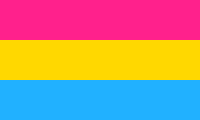 Pansexual Flag
Pansexual Flag
Three equally spaced horizontal bands of pink, yellow and blue.
Creator unknown, appeared on the internet in mid-2010.
RGB Codes: Pink 255, 33, 140 / Yellow 255, 216, 0 / Blue 33, 177, 255
Polysexual Flag
Three equally spaced horizontal bands of pink, green and blue.
The polysexual pride flag was designed by a Tumblr user with the signature “Samlin”, and first made public on the blog @f**kyeahpolysexuality on July 11, 2012.
RGB Codes: Pink 246, 26, 185 / Green 7, 213, 105 / Blue 28, 146, 246
The Importance of These Flags
Flags are a quick, visual way to show community and bring people together.
Recognising the colours of a flag (for example the Pink, Purple and Blue of the bi flag) allows for bi/queer coding of a scene, be it in an image, film or in real life. People can wear bi colours or a pin badge of the flag that they feel represents them. To many this may mean nothing, but to those aware of the flag it can act as a sign of solidarity and allows members of a particular community to find each other.
A particular colour scheme used for an organisation’s logo can also quickly identify the organisation with its target audience.
This post is a work in progress and more details will be added over time
R. 5 December 2018
